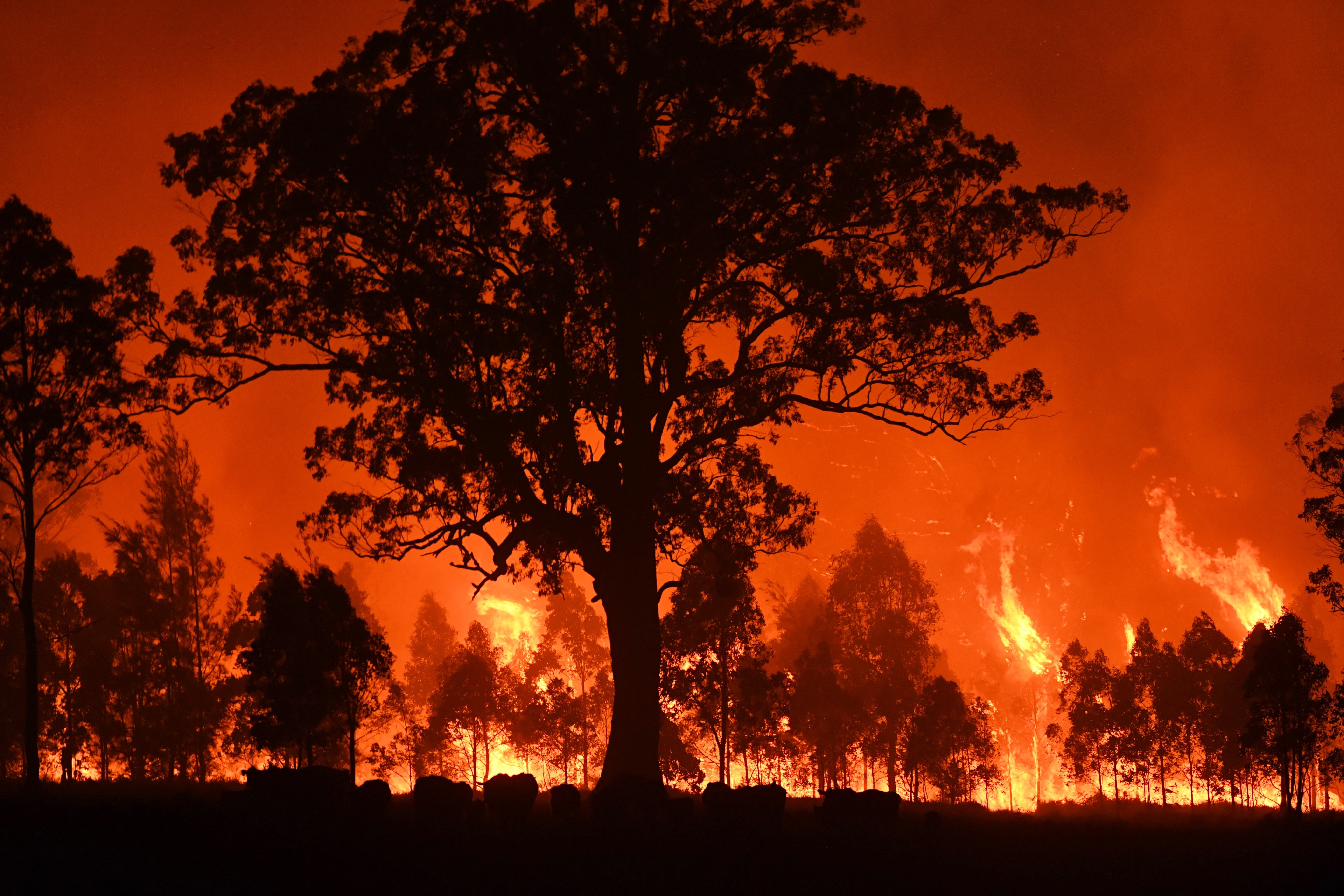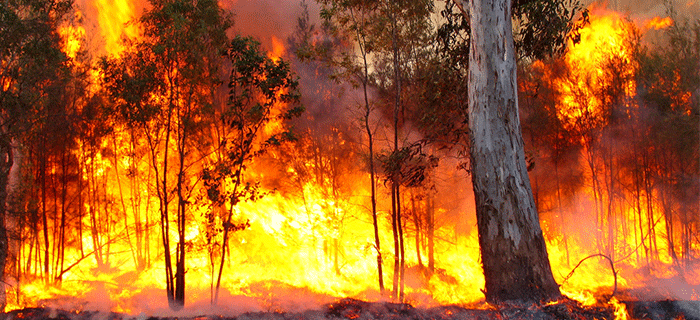BMP Essentials: Safeguarding Your Property Versus Bushfire Risks
BMP Essentials: Safeguarding Your Property Versus Bushfire Risks
Blog Article
The Relevance of Bushfire Management in Fire Security
In the realm of fire security, the relevance of effective bushfire administration can not be understated. As communities globally face enhancing instances of wildfires, the proactive technique to stopping and mitigating these all-natural catastrophes through calculated bushfire administration techniques has emerged as a vital element. Past the instant hazard to human life and residential or commercial property, the interplay in between bushfire management and ecological preservation, neighborhood participation, and climate adjustment poses complicated difficulties that demand comprehensive remedies.
Importance of Proactive Bushfire Avoidance
Aggressive bushfire avoidance methods are necessary in alleviating the ruining effects of wildfires on communities and ecosystems. By taking preventative actions prior to a bushfire happens, the risks connected with these all-natural disasters can be dramatically minimized. One essential facet of aggressive bushfire prevention is fuel monitoring. This entails minimizing the quantity of flammable product, such as dead plant life and completely dry leaves, that can function as gas for fires. Gas administration methods consist of suggested burns, where controlled fires are purposely lit to decrease the build-up of flammable product.
Educating the public on fire safety practices and advertising community recognition concerning the value of bushfire prevention are vital parts of aggressive methods. Ultimately, aggressive bushfire prevention plays a significant role in safeguarding areas and environments from the destructive influences of wildfires.
Function of Neighborhood Engagement in Fire Security
Involving the neighborhood in fire security efforts is indispensable to improving the performance of proactive bushfire prevention strategies. Neighborhood involvement plays a critical function in fostering a cumulative understanding of the threats positioned by bushfires and the relevance of readiness procedures. By entailing local citizens, authorities can share important information on fire security techniques, evacuation treatments, and early warning systems, encouraging individuals to take proactive steps to secure their lives and residential properties.
Moreover, community involvement initiatives assist develop durability within areas, fostering a feeling of unity and shared duty in mitigating fire risks. Through workshops, training sessions, and neighborhood events, residents can discover just how to develop defensible rooms around their homes, lower fire fuel lots, and recognize possible risks. By fostering a society of preparedness and collaboration, neighborhoods can enhance their ability to respond efficiently to bushfire emergencies, lessening the influence on lives and homes. Eventually, neighborhood interaction is a cornerstone of comprehensive fire protection strategies, emphasizing the relevance of cumulative activity in guarding vulnerable locations from the hazard of bushfires.
Value of Wild Animals Conservation in Bushfire Administration
Conservation of wildlife plays a crucial role in efficient bushfire administration approaches, making certain the security of varied ecological communities and biodiversity in fire-prone regions. Wild animals preservation is crucial as it contributes to the total resilience of communities, aiding in their capability to withstand and recuperate from the effect of bushfires. By preserving habitats and shielding various types, the all-natural balance within these environments is maintained, which is crucial for their long-term health and wellness and sustainability.
Furthermore, wildlife conservation additionally helps in decreasing the danger and strength of bushfires. Healthy environments with unspoiled wildlife populaces can act as natural firebreaks, reducing the spread of fires and restricting their devastating possibility (Bushfire Risk). Certain pet species, like tunneling pets or birds that spread seeds, play distinct functions in protecting against fires or aiding in the post-fire regrowth of environments
Incorporating wild animals preservation into bushfire administration methods is not just essential for safeguarding biodiversity yet additionally for advertising the total wellness and durability of ecosystems in the face of enhancing fire risks.
Advantages of Strategic Gas Reduction Programs
Strategically implementing gas reduction programs is vital in reducing the risk and influence of bushfires in fire-prone regions. These programs involve controlled burning, mechanical clearing up, and other techniques to minimize the quantity of combustible vegetation offered to fuel wildfires. By strategically reducing gas tons in key locations, such as near residential communities or important facilities, the strength and spread of bushfires can be considerably decreased.
One of the main benefits of gas decrease programs is the enhancement of overall fire resilience in an ecological community. By producing strategic fuel breaks and decreasing the continuity of plants, these programs help to interrupt the course of a bushfire, making it simpler for firefighters to contain and snuff out the blaze. Additionally, fuel reduction programs can shield biodiversity by stopping excessively extreme fires that can ravage environments and endanger wildlife populaces.
Additionally, these programs can likewise guard human lives and residential property by reducing the threat of tragic fires that present a significant danger to neighborhoods. Inevitably, strategic fuel decrease programs play an essential function in aggressive bushfire management and fostering a much safer environment for both people and nature.
Impact of Climate Modification on Bushfire Threat

Greater temperature levels result in drier plants, making it much more this post prone to ignition. Reduced rainfall in particular areas extends drought conditions, additionally enhancing the flammability of the landscape. In addition, the altering environment has modified wind patterns and weather, causing even more erratic fire habits and quick fire spread.
As the environment continues to alter, the frequency and strength of bushfires are anticipated to rise, necessitating a adaptive and positive technique to bushfire monitoring. Approaches need to advance to account for the altering danger landscape, integrating environment estimates and considering long-lasting durability in fire administration preparation. Resolving the impact of climate change on bushfire danger is crucial in establishing efficient strategies to protect lives, residential property, and the environment.
Verdict
In verdict, proactive bushfire avoidance, community involvement, wildlife preservation, tactical gas reduction programs, and consideration of climate adjustment are crucial parts in effective fire protection. By implementing these strategies, we can much better handle bushfire dangers and secure both human lives and the setting. BAL Report. It is vital that stakeholders work together to focus on these steps to reduce the disastrous effect of bushfires on ecosystems and areas

As the environment proceeds to transform, the regularity and strength of bushfires are expected to rise, necessitating a adaptive and positive strategy to bushfire administration.In conclusion, positive bushfire prevention, area engagement, wild animals conservation, calculated fuel decrease programs, and factor to consider of climate adjustment are essential components in reliable fire BAL Report security.
Report this page